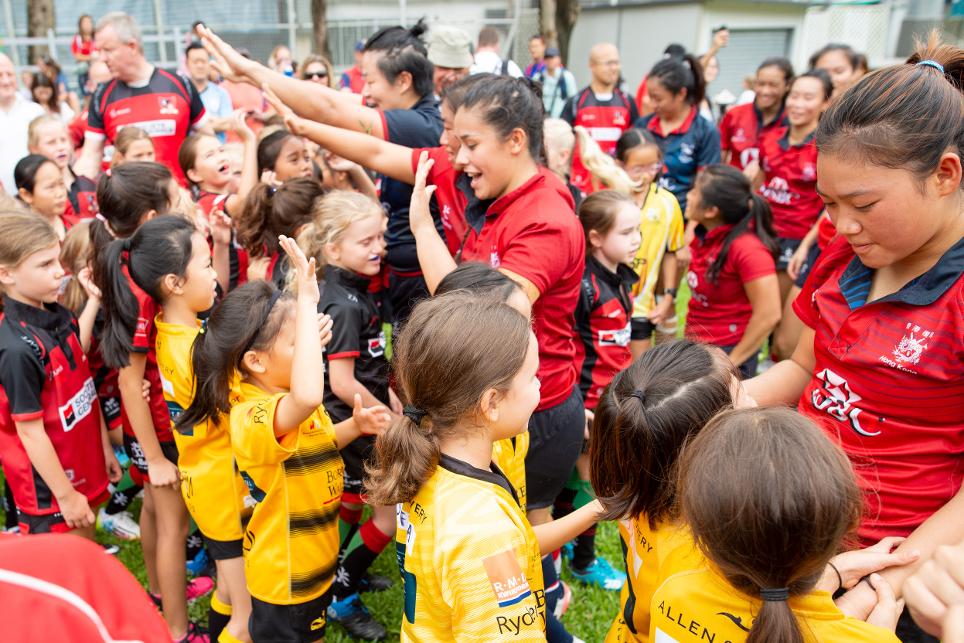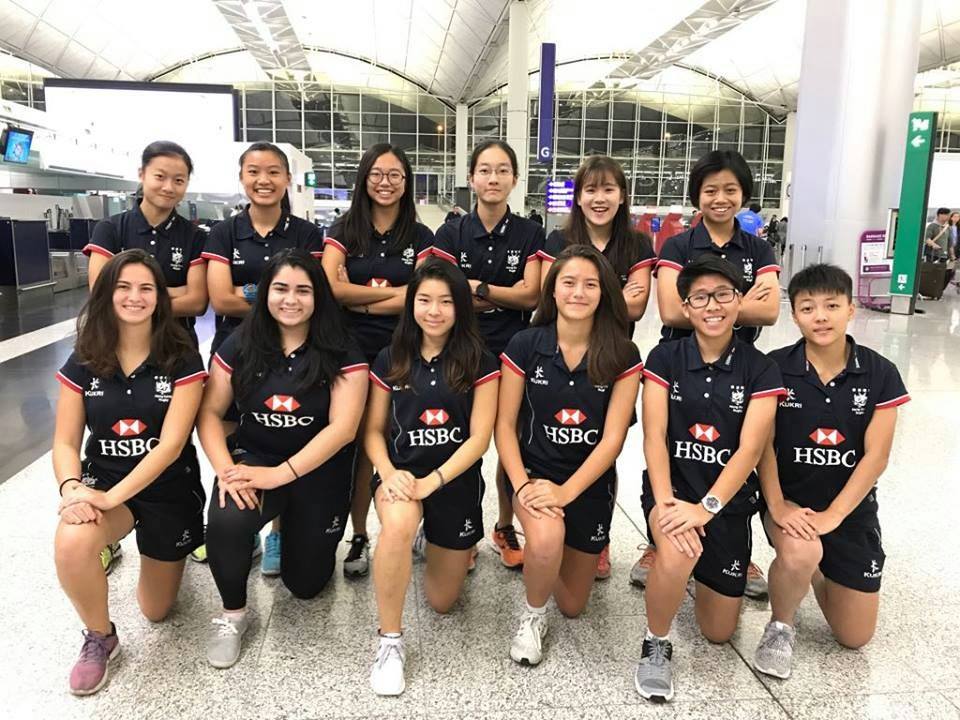As Samantha Feausi told a conference last weekend, there was little chance she could have predicted the growth of women’s rugby in Hong Kong, or the role she would play in it, when she first picked up a ball 20 years ago.
When a 14-year-old Feausi first attended a training session at Valley RFC two decades ago she was joined by only seven other women. It was a similar story at clubs across the territory, one that continued in a similar vein for much of the next decade.
However, in line with a global peak in interest in the women’s game and on the back of some success for the national teams, there has been a surge in the numbers of women and girls playing rugby in Hong Kong.
According to Feausi, Head of Women’s Rugby Development at the Hong Kong Rugby Union (HKRU), there are now more than 4,500 registered female players in the territory, which according to the latest figures published by World Rugby would mean that women and girls make up around a third of all registered rugby players in Hong Kong.
It is those participation numbers that helped convince Feausi, a former captain of Hong Kong’s women’s sevens and 15s national teams, to put on the inaugural HKRU Women and Girls Rugby Conference.

KEY MESSAGES
“Our team and our player numbers grow every year and we thought we’d hold a conference just to support our grassroots levels in different areas of the game,” she said.
“We had someone here to talk about nutrition, someone to give a talk on sports psychology, we also had a talk on injury prevention.”
Around 100 coaches, players and parents attended the two-day conference at Olympic House which featured talks from a number of speakers involved in rugby, sport and the media in Hong Kong.
One key message of the event was tailoring coaching for women and girls specifically, something that isn’t always taken into account.
“I just find that a lot of coaches here, a lot of people working in the game, tend to just do what the boys do or what the men do and apply the same model to the girls and women, but it doesn’t really work,” Feausi said.
Indeed, when Feausi first fell in love with an oval ball playing numbers were not necessarily healthy enough to warrant a tailored programme.
Women’s rugby in Hong Kong GAINING MOMENTUM
“I first got involved in rugby when I was 14 years old, I went down to a senior women’s training for a club called Valley and we only had about seven or eight players for the whole season and somehow it worked,” she said.
“This was in the late-90s, but from around the mid-90s women’s rugby starting kicking off here, it started getting momentum so to speak.
“Twenty years on we now have over 4,500 players, we have girls’ youth teams which we never had before, we’ve got minis teams which we never had before. We have a senior team which represented Hong Kong at the recent World Cup, which was a huge achievement for us. We’ve got a full-time women’s sevens professional set-up.
“So, to see where it’s gone from 20 years ago to now is wonderful.”
Feausi, who retired from playing three years before Hong Kong made their debut at Women’s Rugby World Cup 2017 in Ireland, admits the exact reasons for that growth are hard to pin down.
“I got the scholarship, yes for myself, but what I do with the scholarship and what I learn from the scholarship I hope to be able to contribute to the game in Hong Kong.”
“To be honest I think it’s attached on with the growth of popularity globally, we’ve kind of used that to help gain our momentum,” she said.
SCHOLARSHIP BENEFITS
“It was a slow start, don’t get me wrong. I think 10, 15 years was a slow start but in the past five years or so it’s essentially grown massively. To a point that now, for us, it puts a lot of pressure on our facilities, our coaching resources, our manpower.
“So, we’re having now to also look into addressing those areas, for example, increasing more female coaching, female match officials, female leadership roles. That’s a big thing for us in the next year or two, is trying to grow that off-the-pitch base.”
Something that may help Feausi as she attempts to tackle those off-field issues is the World Rugby Women’s Leadership Development Scholarship.
The former Hong Kong captain was one of the inaugural recipients of this scholarship in March and has since used it to gain insight into what efforts are being made to combat similar dilemmas in other countries.
She visited Botswana in May for the IWG World Conference on Women and Sport, an experience which gave her the confidence to hold her own event at home.
EYE-OPENING EXPERIENCE
Feausi has since disseminated tools from her own event in Hong Kong to her follow scholarship recipients in the hope that they will find it useful for the work they are doing in their own regions.
“I got the scholarship, yes for myself, but what I do with the scholarship and what I learn from the scholarship I hope to be able to contribute to the game in Hong Kong,” she explained.

“I just recently attended a conference in May and it opened my ears to so much. It just opened my eyes to many things that I didn’t realise. I kind of built on that to then hold this conference and this Women and Girls Rugby Conference is something that I hope to do bi-annually.
“I think it works, I think there’s demand for it, I think it gets people talking about women’s and girls rugby.”
Moving forward, Feausi believes there is room for yet more growth in women’s rugby in Hong Kong.
WORKING TOGETHER to promote Women’s rugby in Hong Kong
“We can continue growing it at the grassroots levels, I guess expanding the game to perhaps more local players to play,” she said.
“I (want to) utilise this scholarship to share more ideas. The biggest thing for me is just seeing what everyone else is doing globally and what’s working for them.
“I think women’s rugby will benefit a lot if people share best practice.”
So, as she looks back on the strides made over the last two decades, where will the game be in another 20 years?
“I hope to see our numbers being doubled, at least,” she said. “I’d like to see our growth levels on a par with those in other countries. So, basically in 20 years’ time I’d hope to see more rugby being played at our local schools and double the playing population.”
Photos: HKRU


 “I got the scholarship, yes for myself, but what I do with the scholarship and what I learn from the scholarship I hope to be able to contribute to the game in Hong Kong.”
“I got the scholarship, yes for myself, but what I do with the scholarship and what I learn from the scholarship I hope to be able to contribute to the game in Hong Kong.”
